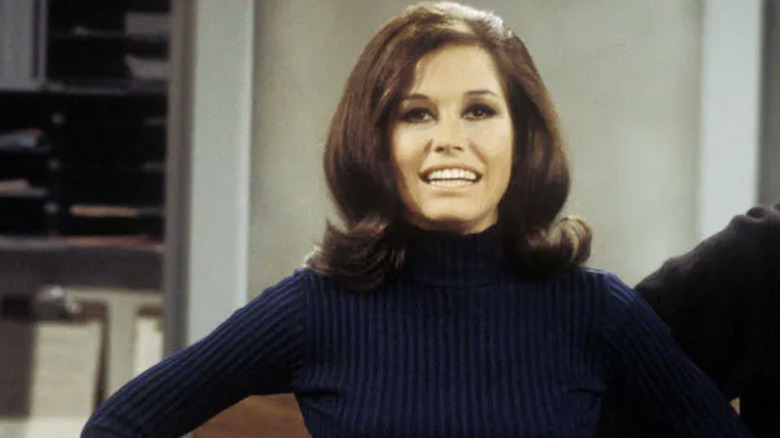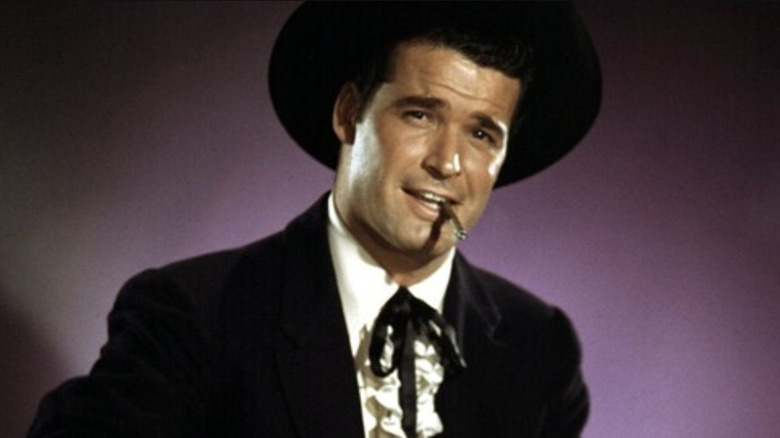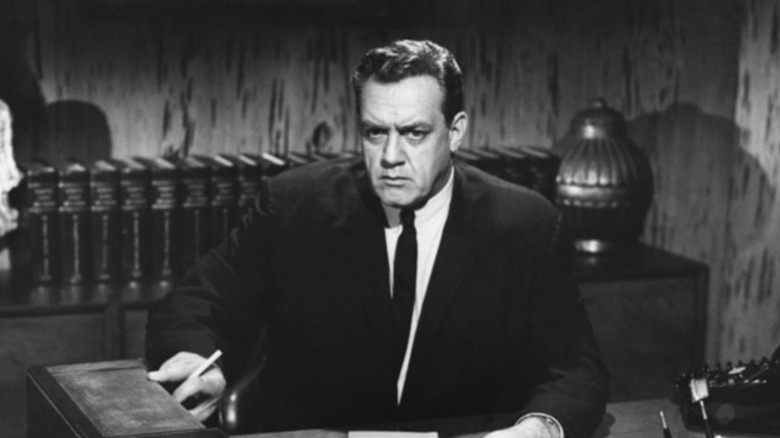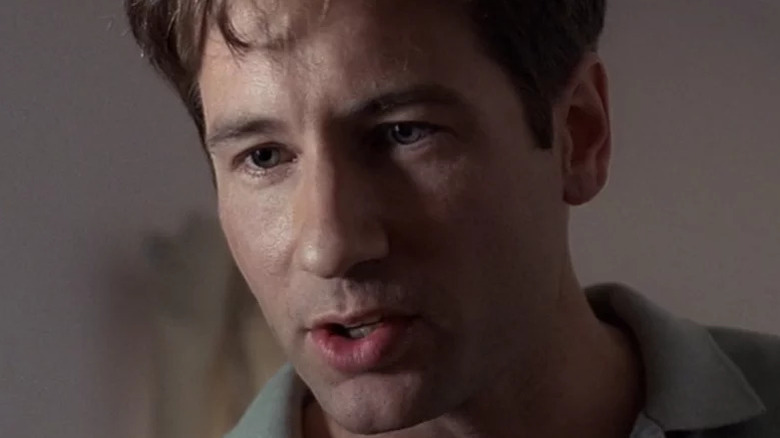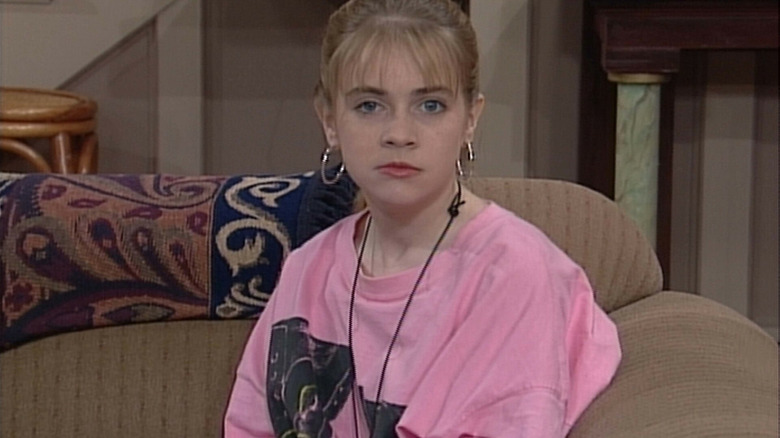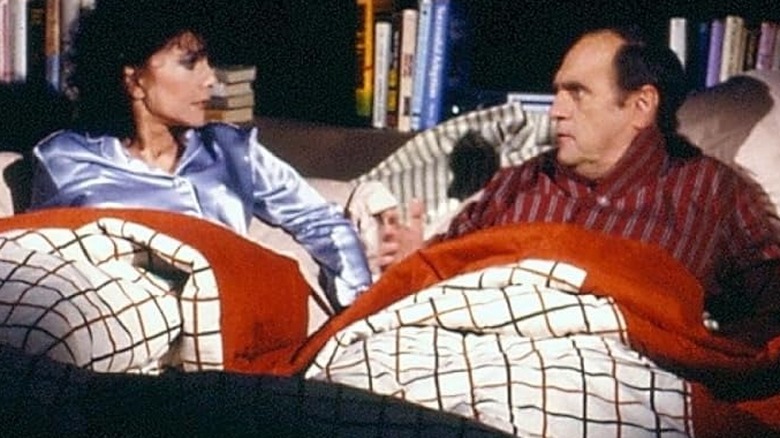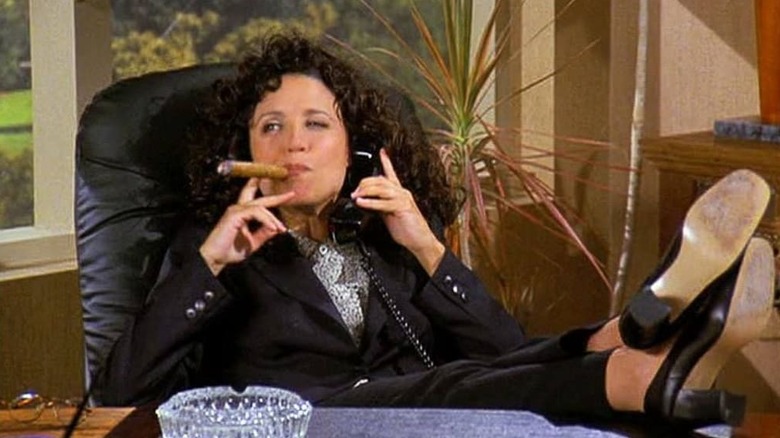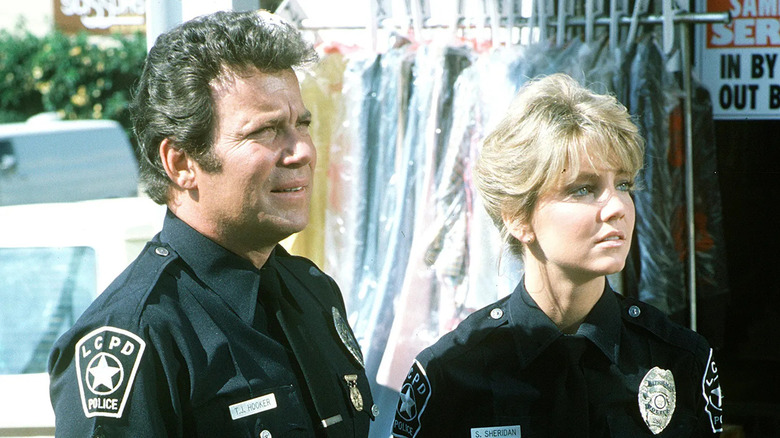10 Stars Who Had More Than One Iconic TV Show Role
Movie stars must frequently play multiple famous characters – in fact, it's almost part of the job. TV stars are different. All too often, they are associated with only one character, who we never want to see recast. It would just seem... weird. Still, we can't help but admire television actors who have had more than one iconic TV show role, 10 of whom we've highlighted in the list below.
First, some ground rules. We're not including spin-offs or revivals with the same character, so as great as Kelsey Grammer was as Dr. Frasier Crane on two shows, he doesn't make the list. We won't include stars who successfully switched from sketch comedy to narratives, so no Tina Fey or Amy Poehler from "Saturday Night Live" to "30 Rock" and "Parks & Recreation," respectively. We won't include TV writers who transitioned to becoming stars of their own show (sorry, Larry David lovers), and also no voice actors (or else Frank Welker would be all over this list). So with that said, let's see which TV stars played more than one iconic character who will stand the test of time!
Mary Tyler Moore
Mary Tyler Moore left behind a legacy of not just one, but two groundbreaking sitcoms. The first was "The Dick Van Dyke Show," which ran for five seasons and 158 episodes on CBS from 1961 to 1966. Starring the eponymous Dick Van Dyke, the show was actually the brainchild of Carl Reiner and was novel for its realistic portrayal of the married life between Rob (Van Dyke) and Laura Petrie (Moore). In particular, the show managed to mine humor from Rob's "work-life balance," before there was a term for it, in a way audiences hadn't seen before.
Moore got her own sitcom with "The Mary Tyler Moore Show," which ran for seven seasons and 168 episodes on CBS from 1970 to 1977, and was co-created by another TV genius, James L. Brooks. While "The Dick Van Dyke Show" portrayed married life, "The Mary Tyler Moore Show" showcased the life of a single, thirty-something career woman, Mary Richards (Moore), as she navigated the realities of being a working woman seeking love and fulfillment in the 1970s. Both "Dick Van Dyke" and "Mary Tyler Moore" may seem standard fare today, but they were unlike anything on TV back in their day. Put simply, TV watchers saw their lives reflected back at them in both shows. And it wasn't just Moore's beauty that made her a TV star; she was also arguably the most gifted TV comedienne next to Lucille Ball.
Andy Griffith
Andy Griffith had become a household name as a radio, film, and even Broadway star in the 1950s, but history will most remember him for his work on two TV shows: "The Andy Griffith Show" and "Matlock." Griffith's Southern-fried comedy stylings were front and center in his titular sitcom, in which he played the widower and single father Sheriff Andy Taylor, who comedically kept the peace (and quiet) in the sleepy, make-believe town of Mayberry, located in Griffith's native North Carolina. "The Andy Griffith Show" managed to mine comedy gold for eight seasons and 249 episodes from 1960 to 1968, surviving a transition from black and white to color, and earning a generation of die-hard fans (we guarantee you're thinking of the iconic whistling theme song right now, perhaps the most understated intro ever).
While Griffith was the star, he was a generous performer, as most of the show's biggest laughs were for its supporting lineup: Aunt Bee (Frances Bavier), Gomer Pyle (Jim Nabors), and especially Deputy Barney Fife (Don Knotts). The Griffith-less "Mayberry R.F.D." lasted just three seasons, while "The New Andy Griffith Show" lasted only one, but Griffith had much better luck playing a different character: Ben Matlock in "Matlock," which has since gotten a CBS reboot starring Kathy Bates.
The drama lasted for nine seasons and 193 episodes on NBC and ABC from 1986 to 1995, and starred Griffith as a criminal defense lawyer who also managed to solve crimes, usually revealing the criminal in court. Formulaic? Sure. TV comfort food audiences ate up like biscuits and gravy? You betcha.
James Garner
You may be surprised to discover that TV's "Maverick" prominently featured four characters with that last name — brothers Bret, Bart, and Brent, and their cousin Beau. But it's only the first, Bret Maverick, who stood the test of time. Credit goes to James Garner, whose performance as the debaucherous dandy ran for 124 episodes and five seasons (1957-1962) on ABC, as well as TV movies and even a feature-length Hollywood film directed by Richard Donner. TV westerns were du jour back in the 1950s and 1960s, but "Maverick" was different because the title character was more of a self-serving rogue than a white-hatted hero. Bret Maverick would usually do the right thing, but only when he'd exhausted all other alternatives, and he'd rather play cards than save the day. Making such a character lovable was no easy feat, but Garner's gift was making it look easy.
Garner brought the same charismatic charm to his other iconic TV character, Jim Rockford. "The Rockford Files" ran for six seasons (1974-1980) and 123 episodes, as well as eight TV movies, on NBC. While "Maverick" was a period Western, "The Rockford Files" was a contemporary crime drama, though both were laced with comedic elements. Rockford was an ex-con falsely convicted of a crime he didn't commit, who worked as a private detective operating out of a trailer along the Pacific Coast Highway in Malibu, California. TV has had great good guys and bad guys, but nobody balanced the two better than Garner.
Raymond Burr
You can tell a lot about someone based on how they know Raymond Burr. If you love classic movies, you remember Burr as the wife murderer that James Stewart creeps on in Alfred Hitchcock's "Rear Window." Love Godzilla? You'll know Burr as journalist Steve Martin (yes, that was his name) from "Godzilla: King of the Monsters" and "Godzilla 1985." And if you're a TV aficionado, you'll know Burr from his iconic TV roles. First up is "Perry Mason," which ran for nine seasons and 271 episodes on CBS from 1957 to 1966. Based on Erle Stanley Gardner's pulp novels, "Perry Mason" was a courtroom drama about the titular defense attorney who not only cleared his clients but revealed the real criminal on the stand. If this sounds like "Matlock" from a few decades later, well, imitation is the sincerest form of flattery.
Burr was back on TV with another successful show one year after "Perry Mason" ended with NBC's "Ironside," which ran for eight seasons and 199 episodes from 1967 to 1975. Burr played Robert T. Ironside, former chief of detectives for the San Francisco PD, now confined to a wheelchair and forced to retire after being shot in the spine. While Ironside's legs no longer functioned, his mind was as sharp as ever, and he used it to catch bad guys as a police consultant.
David Duchovny
David Duchovny is probably best known for "The X-Files," where he played the paranoid conspiracy theorist Detective Fox Mulder, who investigated paranormal and supernatural phenomena alongside his skeptical partner-turned-lover and mother of his child (it was a whole thing), Detective Dana Scully (Gillian Anderson).
"The X-Files" originally ran for nine seasons and 202 episodes from 1993 to 2002 on Fox, though Duchovny disappeared for some of Season 8 and almost all of Season 9 to pursue a film career, which included two feature-length, theatrical "X-Files" movies. Duchovny's Mulder was back for a well-received 10th season in 2016 and a largely reviled 11th season in 2018. Diehard fans may want to believe there will be a season 12, but we suspect Duchovny is done playing Mulder (though a Ryan Coogler-produced "X-Files" reboot is supposedly forthcoming).
Between Seasons 9 and 10 of "The X-Files," Duchovny played Mulder's polar opposite, Hank Moody, on "Californication," which ran for seven seasons and 84 episodes on Showtime from 2007 to 2014. The ribald and raucous adult dramedy was about a struggling novelist torn between his twin vices of alcoholism and womanizing, all while attempting to raise his daughter and win back his ex-wife. So one show was about extraterrestrials, and the other was just extra.
Melissa Joan Hart
For millions of millennials, Melissa Joan Hart was either your first female celebrity crush (besides Amy Jo Johnson as the Pink Power Ranger) or your TV big sister (besides Sarah Michelle Gellar as "Buffy the Vampire Slayer"). It depends on whether you're an older millennial (born between the early to mid-1980s) or a middle millennial (born between the late 1980s or early 1990s). Not to turn this into a sociological lecture, but the science on this is settled. If you belong to the first cohort, you associate Hart with Clarissa from "Clarissa Explains It All," which ran for five seasons and 65 episodes from 1991 to 1994 on Nickelodeon during its seminal Saturday night SNICK lineup. Clarissa Darling was both host and star, breaking the fourth wall to talk directly to her viewers about the weird, wild world of being a teenager. Clarissa was wry, witty, and, most importantly, relatable to her viewers.
While Clarissa was a darling of her demo, Sabrina bewitched viewers for 163 episodes and three TV movies from 1996 to 2003, first on ABC and then on The WB. "Sabrina the Teenage Witch" started as a spin-off of "Archie" comics in the 1960s, but Hart's version embodied the sarcastic spirit of the 1990s. While "Sabrina the Teenage Witch" was necessarily more fantastical than the relatively grounded "Clarissa Explains It All," both characters were relatable to a generation of viewers who navigated their changing worlds by watching Hart's characters navigate theirs.
Bob Newhart
With his trademark deadpan delivery, Bob Newhart was a mainstay on TV for decades. Newhart parlayed his fame from his Billboard chart-topping comedy albums into the largely forgotten NBC variety program "The Bob Newhart Show" in 1961, which lasted for only one season. Newhart was back on TV more than a decade later in a very different program, also titled "The Bob Newhart Show," this time to much greater success. The latter ran for six seasons and 142 episodes from 1972 to 1978 on CBS. Newhart played Dr. Robert Hartley, a Chicago psychologist whose own mental well-being was challenged to great comedic effect by the motley characters who surrounded him, most notably his smart-aleck wife, Emily (Suzanne Pleshette).
When "The Bob Newhart Show" ended in 1978, TV viewers missed Newhart, and CBS execs did too — so he was back in 1982 for a new show, simply titled "Newhart." You know you have a connection with your audience when only your surname will suffice. For eight seasons and 184 episodes, Newhart played Dick Loudon, a NYC resident-turned-Vermont innkeeper, whose big-city sensibilities were disturbed by the small-town local yokels' quirks. "Newhart" is perhaps best remembered for its epic twist ending (one of the most famous in TV history) in which Loudon is knocked out and wakes up from a dream as Dr. Hartley next to Pleshette's Emily. So maybe Newhart only played one great TV character, as Dick Loudon was actually Dr. Robert Hartley's imagination?
Ron Howard
Ron Howard is the Academy Award-winning, $5 billion-earning director behind such seminal cinematic hits as "Splash," "Cocoon," "Apollo 13," "A Beautiful Mind," and "Dr. Seuss' How The Grinch Stole Christmas," to name a few. But he actually started his career as child star "Ronny" Howard, who played Opie Taylor, son of Andy Griffith's Sheriff Andy Taylor on "The Andy Griffith Show." Howard took a brief detour into movie stardom with 1973's "American Graffiti," from writer-director George Lucas, before Lucas conquered the movie universe from a galaxy far, far away.
Besides Opie Taylor, TV viewers also remember Howard for his other iconic TV role, Richie Cunningham, the central character of "Happy Days," which ran for 11 seasons and 255 episodes from 1974 to 1984 on ABC, though Howard was only on for seven seasons. Showing that an addiction to the sweet nectar of nostalgia is nothing new, "Happy Days" came out in the 1970s, but was set in the 1950s, taking audiences back to a "simpler" time of poodle skirts, drive-in burger joints, and cool guys with leather jackets jumping over sharks on skis (okay, maybe that last one only happened on TV). Let's be honest: Howard can win Oscars and direct blockbusters, but to a certain set of viewers, he is always going to be Opie Taylor or Richie Cunningham.
Julia Louis-Dreyfus
Julia Louis-Dreyfus came to fame playing a self-absorbed narcissist in a show famously about nothing, and cemented her star power in a show about the insecurities behind the leader of the free world. So you can't say Louis-Dreyfus doesn't have considerable range. She actually got her big break as a featured cast member on "Saturday Night Live" from 1982 to 1985. Louis-Dreyfus' stint was unspectacular, but in her defense, nobody was stealing the show from Eddie Murphy during his legendary run. Louis-Dreyfus' time would come by the end of the decade with her role as Elaine Benes on NBC's "Seinfeld," which ran for nine seasons and 180 episodes from 1989 to 1998. It's hard to overstate just how popular "Seinfeld" was, or how groundbreaking its style and sense of humor were. Really, all you need to say is "man hands," "soup Nazi," "Festivus," or any of a dozen other references, and people in the know will know.
Matching the stratospheric success of "Seinfeld," let alone topping it, would seemingly be impossible, but Louis-Dreyfus managed to capture a different kind of comedy magic as Vice President Selina Meyer, the central character of "Veep." Running for seven seasons and 65 episodes on HBO from 2012-2019, "Veep" centered around the inept and often-cruel Selina, whose best intentions were constantly (and comedically) upended by the realities of politics. Whether Louis-Dreyfus' classic characters are running the country or just running their mouths, both showcase her status as one of TV's top comedy stars.
William Shatner
Let's get one thing straight: William Shatner will always and forever be known for his legendary performance as Captain James Tiberius Kirk of the Starship Enterprise on "Star Trek." Well, that and his spoken-word albums. Oh, and that a mask of his face was used for Michael Myers in the "Halloween" series. Okay, so Shatner is known for a lot of things, not all of them flattering, but it starts and ends with Captain Kirk. Despite being about a five-year voyage to explore strange new worlds, the original "Star Trek" ran for a mere three seasons and 79 episodes (1966-1969) before being unceremoniously canceled. But a funny thing happened on the way to the chopping block, as the success of "Star Trek" in syndication wound up turning the franchise into one of the most enduring in all of media.
While "Star Trek" has no shortage of iconic characters across all of its numerous iterations, perhaps none are as quintessential to the series as Shatner's Captain Kirk, and to say so is logical, to quote Mr. Spock. Somehow, Shatner was able to step out of his own considerable shadow with another famous TV role, Sgt. T.J. Hooker, on the show of the same name, which ran for five seasons and 91 episodes from 1982 to 1986, first on ABC and then CBS. Portraying a former detective who demoted himself to street patrol, Shatner showed why nobody played a better man of action than him.

